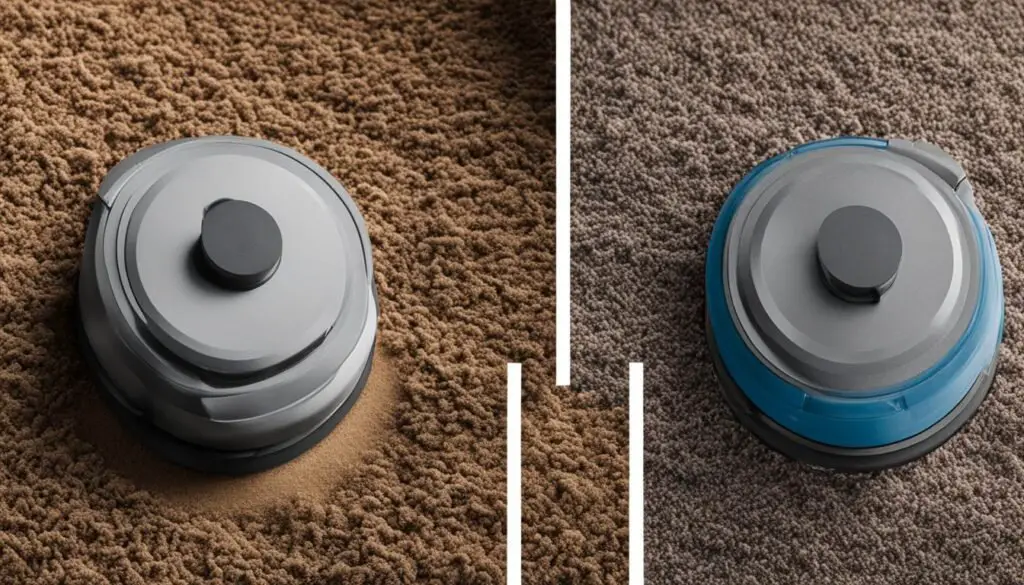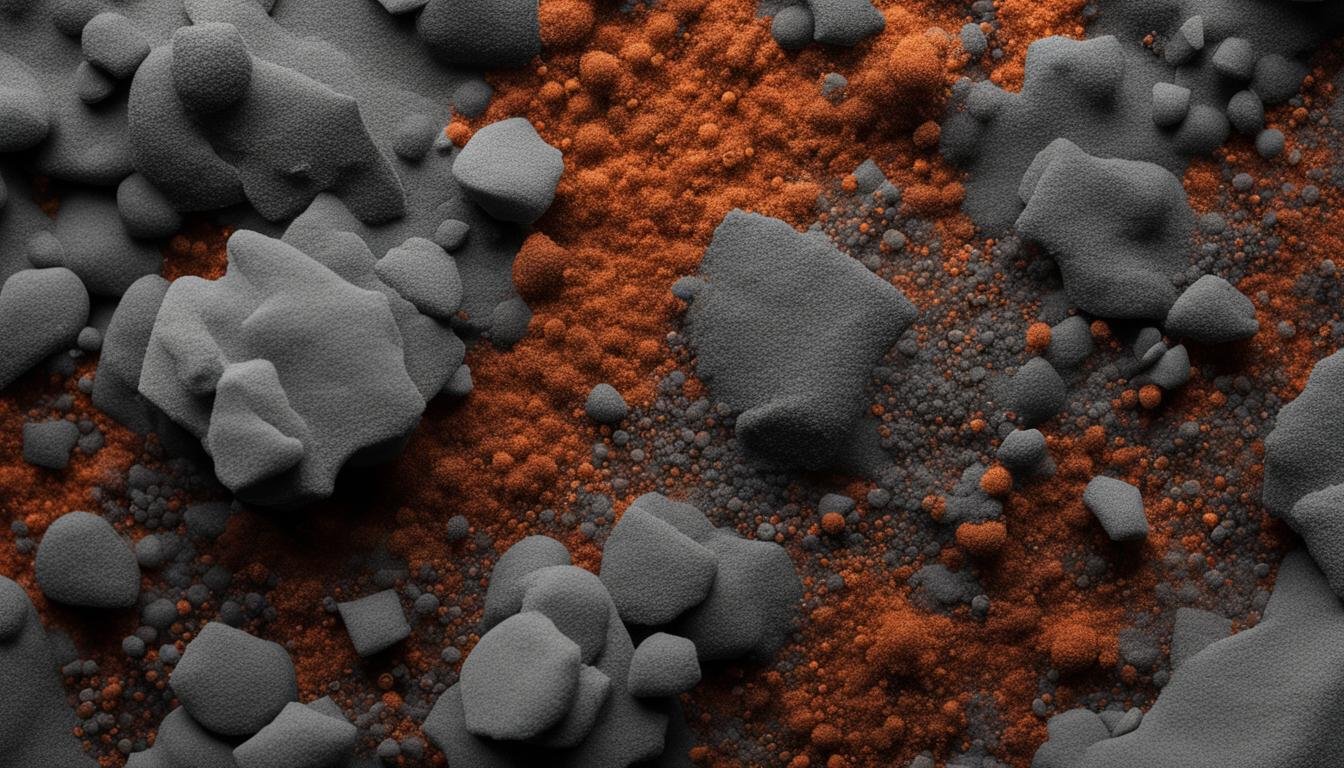Hello there! Have you ever wondered why the dust you vacuum up appears grey? It’s not just a random color; there’s actually a fascinating science behind it. In this article, I’ll explain the reasons behind the grey color of vacuum cleaner dust, shedding light on the composition of dust and how it interacts with light.
When we talk about dust, we’re referring to a combination of various components. It includes household debris like dirt, hair, and tiny particles from clothing and fabrics. Additionally, dust contains dead skin cells, pet dander, mold spores, and pollen. All these elements play a role in creating the grey appearance of vacuum cleaner dust.
The small size and surface area of dust particles also contribute to their color. Smaller particles tend to appear dark brown or dark grey. This color is intensified by the absorption and scattering of light that occurs when dust particles interact with it.
There are several factors that can affect the color of dust in vacuum cleaners. Household activities like cooking or smoking indoors can introduce particles that darken the color of dust. The type of flooring in your home also plays a role, with carpeted floors tending to accumulate more dust particles, resulting in a grey appearance.
Now that we understand the science behind why vacuum cleaner dust is grey, we can take steps to maintain a cleaner environment. By implementing regular cleaning routines and using efficient vacuum cleaners, we can reduce the accumulation of dust and keep our homes fresh and clean.
Key Takeaways:
- Vacuum cleaner dust appears grey due to a combination of its components and the way they interact with light.
- The composition of dust includes household debris, dead skin cells, pet dander, mold spores, and pollen.
- The size and surface area of dust particles contribute to their grey color.
- Factors like household activities and flooring types can affect the color of vacuum cleaner dust.
- Understanding the science behind grey dust helps in maintaining a cleaner environment.
Components of Vacuum Cleaner Dust: Understanding its Composition
Dust is composed of various components that come together to create the grey appearance in vacuum cleaner dust. Understanding the composition of dust is crucial in maintaining a cleaner environment. Let’s take a closer look at the different elements that make up vacuum cleaner dust:
Household Debris
One of the main components of vacuum cleaner dust is household debris. This includes dirt, hair, and small particles from clothing and fabrics. As we go about our daily activities, these particles accumulate on surfaces and are eventually sucked up by the vacuum cleaner.
Dead Skin Cells
Both humans and pets shed dead skin cells, and these cells contribute to the grey color of dust when they mix with other particles. Dead skin cells are usually pale in color but can create a noticeable grey appearance when combined with other components.
Pet Dander
Pet dander refers to the tiny particles shed by animals with fur or feathers. These particles easily mix with dust and become part of the vacuum cleaner’s collection. Pet dander can add to the grey coloration of vacuum cleaner dust.
Mold Spores
Mold spores are microscopic reproductive elements of mold. When mold is present in a household, these spores can settle on surfaces and become trapped in the vacuum cleaner. Mold spores contribute to the overall grey color of vacuum cleaner dust.
Pollen
Pollen, a powdery substance produced by plants, can settle on surfaces and add to the grey appearance of dust. Especially during the spring season when pollen is abundant, it becomes a significant component found in vacuum cleaner dust.
Now that we have a clear understanding of the composition of vacuum cleaner dust, it becomes evident why it appears grey. The combination of household debris, dead skin cells, pet dander, mold spores, and pollen creates a mix of particles that contribute to the overall color. By knowing the makeup of dust, you can take appropriate measures to effectively clean and maintain a dust-free home environment.
Factors Affecting the Color of Vacuum Cleaner Dust
Several factors can affect the color of vacuum cleaner dust. Household activities, such as cooking and smoking indoors, can introduce particles that mix with dust and potentially darken its color. Areas with higher humidity may also see changes in dust color due to moisture absorption. The type of flooring in a home can also play a role, with carpeted floors tending to accumulate more dust particles and resulting in a grey appearance. The presence of pets and people, along with their activities, significantly impacts the color of dust. Pet dander and hair, as well as human skin cells, contribute to the overall greyish hue of vacuum cleaner dust.

In households where cooking and smoking are common, particles released into the air can mix with dust and cause it to darken in color. Similarly, areas with higher humidity levels can lead to moisture absorption by dust particles, resulting in changes in color. The type of flooring also influences the color of vacuum cleaner dust. Carpeted floors, for example, tend to collect more dust particles compared to other types of flooring, leading to a grey appearance.
Pets and people can also contribute to the color of dust. Pet dander and hair are common components of household dust, adding to its greyish hue. Similarly, human skin cells, shed naturally throughout the day, become mixed with dust particles and contribute to the overall color. The activities of pets and people, such as shedding hair or engaging in physical activities, can further impact the color of vacuum cleaner dust.
Conclusion: Understanding the Phenomenon of Grey Vacuum Cleaner Dust
The grey color of vacuum cleaner dust is a result of its composition, including components such as household debris, dead skin cells, pet dander, mold spores, and pollen. These various elements combine to create the distinct grey appearance that is commonly seen in vacuumed dust.
Additionally, the small size and large surface area of dust particles play a crucial role in their coloration. The tiny particles, often smaller than a grain of sand, interact with light through processes like Mie scattering, resulting in the overall grey hue.
Furthermore, several factors can affect the color of dust in vacuum cleaners. Household activities, such as cooking, smoking, or high humidity, can introduce additional particles that mix with dust and potentially darken its color. The type of flooring in a home also contributes to the dust’s color, with carpeted surfaces tending to accumulate more particles and appear greyer. Additionally, the presence of pets and people, along with their shedding of dander and skin cells, significantly influences the overall greyish hue of the vacuum cleaner dust.
By understanding the phenomenon of grey vacuum cleaner dust, individuals can take proactive steps to minimize dust accumulation and maintain a cleaner environment. Regular cleaning, proper ventilation, and the use of high-quality vacuum cleaners with efficient filtration systems can help reduce the grey dust in homes and improve indoor air quality.
FAQ
Why is vacuum cleaner dust grey?
Vacuum cleaner dust appears grey due to the combination of its components and the way they interact with light. The composition of dust includes household debris, dead skin cells, pet dander, mold spores, and pollen. These various components contribute to the grey color of vacuum cleaner dust.
What are the components of vacuum cleaner dust?
Vacuum cleaner dust is composed of various components, including household debris (such as dirt and hair), dead skin cells, pet dander, mold spores, and pollen. These particles combine to create the grey appearance of dust when collected by the vacuum cleaner.
What factors affect the color of vacuum cleaner dust?
Several factors can affect the color of vacuum cleaner dust. Household activities such as cooking and smoking can introduce particles that darken the dust’s color. The type of flooring, with carpeted floors tending to accumulate more dust particles, also plays a role. Additionally, the presence of pets and people, along with their activities, significantly impacts the color of dust.
Why does dust turn grey in vacuums?
The grey color of vacuum cleaner dust is the result of its composition, which includes various components such as household debris, dead skin cells, pet dander, mold spores, and pollen. These particles, along with the small size and surface area of dust particles, contribute to the grey appearance when collected by vacuums.
How can I understand the grey color of vacuumed dust?
Understanding the science behind the grey color of vacuumed dust involves considering the composition of dust and how its components interact with light. Additionally, factors such as household activities, flooring types, and the presence of pets and people can affect the color. By understanding these factors, individuals can take steps to reduce dust accumulation and maintain a cleaner environment.
Are there any specific reasons for grey dust in vacuum cleaners?
The specific reasons for grey dust in vacuum cleaners can be attributed to the combination of components in dust, their interaction with light, and various environmental factors. Understanding the composition of dust and the factors that affect its color can help individuals comprehend why dust in vacuum cleaners appears grey.





Leave a Reply